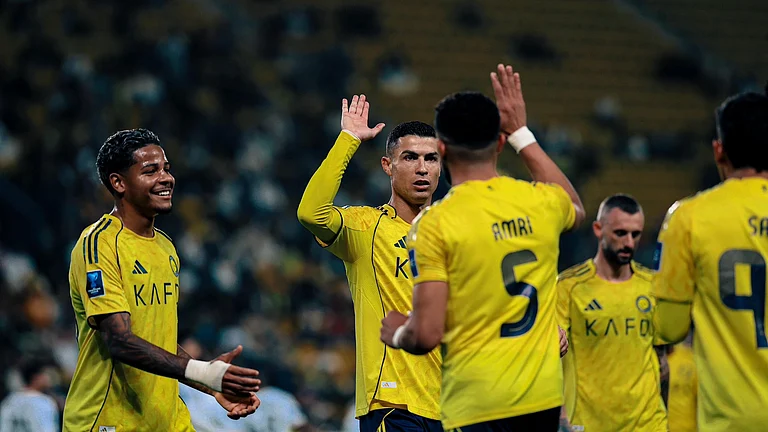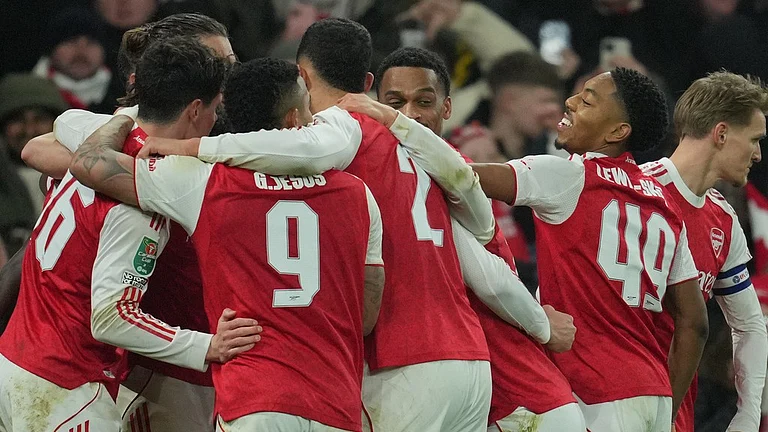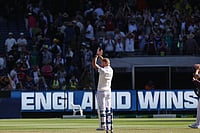The Sikhs may try to set up a separate regime... and that will be only astart of a general decentralisation and break-up of the idea that India is a country,whereas it is a subcontinent as varied as Europe. The Punjabi is as different from aMadrassi as a Scot is from an Italian. The British tried to consolidate it but achievednothing permanent. No one can make a nation out of a continent of many nations.
—General Claude Auchinleck, writing in 1948
When Nehru goes, the government will become a military dictatorship—as in so manyof the newly independent states, for the army seems to be the only highly organised centreof power.
—Aldous Huxley, writing in 1961
The great experiment of developing India within a democratic framework has failed.(Indians will soon vote) in the fourth—and surely last—general election.
—The London Times, in 1967
***
Yet it has. In those first general elections, voter turnout was less than 46 per cent. Over the years, this has steadily increased; from the late 1960s about three out of five eligible Indians have voted on election day. In assembly elections, the voting percentage has tended to be even higher. When these numbers are disaggregated, they reveal a further deepening. In the first two general elections, less than 40 per cent of eligible women voted; by 1998, the figure was in excess of 60 per cent. Besides, as surveys showed, they increasingly exercised their choice independently, that is, regardless of their husband's or father's views on the matter. Also voting in ever higher numbers were Dalits and tribals, the oppressed and marginalised sections of society. In North India in particular, Dalits turned out in far greater numbers than high castes. As the political analyst Yogendra Yadav points out, "India is perhaps the only large democracy in the world today where the turnout of the lower orders is well above that of the most privileged groups."
The institutions that keep us
together are those bequests of the
British: the civil service,
the army, the railways, and cricket.

And yes, this too: the cricketing nation
The Indian love of voting is well illustrated by the case of a cluster of villages on the Andhra/Maharashtra border. Issued voting cards by the administrations of both states, the villagers seized the opportunity to exercise their franchise twice over. It is also illustrated by the peasants in Bihar who go to the polls despite threats by Maoist revolutionaries. Likewise, in parts of the Northeast where the writ of the Indian state runs erratically or not at all, insurgents are unable to stop villagers from voting. As the Chief Election Commissioner wryly put it, "The Election Commission's small contribution to the integrity of the country is to make these areas part of the country for just one day, election day".
That elections have been successfully indigenised in India is demonstrated by the depth and breadth of their reach—across and into all sections of Indian society, by the passions they evoke, and by the humour that surrounds them. There is a very rich archive of electoral cartoons, poking fun at promises made by prospective politicians, their desperation to get a party ticket, and much else. At other times, the humour can be gentle rather than mocking. Consider the career of a cloth merchant from Bhopal named Mohan Lal, who contested elections against five different prime ministers. Wearing a wooden crown and a garland gifted by himself, he would walk the streets of his constituency, ringing a bell. He unfailingly lost his deposit, thereby justifying his own, self-inflicted sobriquet of 'Dhartipakad', or he who lies, humbled, on the ground. His idea in contesting elections, said Mohan Lal, was "to make everyone realise that democracy was meant for one and all".
The hardware of democracy
gives us reason to cheer.
Not so its software.
Most of our parties are family firms,
most politicians corrupt.

Voice from below: India is the only democracy where the lower orders vote more enthusiastically than privileged groups
Considering the size of the electorate, it is overwhelmingly likely that more people have voted in Indian elections than voters in any other democracy. India's success in this regard is especially striking when compared to the record of its great Asian neighbour, China. That country is larger, but far less divided on ethnic or religious lines, and far less poor as well. Yet there has never been a single election held there. In other ways too China is much less free than India. The flow of information is highly restricted—when the search engine Google set up shop in China in February 2006, it had to agree to submit to state censorship. The movement of people is regulated as well—the permission of the state is usually required to change one's place of residence. In India, on the other hand, the press can print more or less what they like, and citizens can say exactly what they feel, live where they wish to and travel to any part of the country.
India/China comparisons have long been a staple of scholarly analysis. Now, in a world that becomes more connected by the day, they have become ubiquitous in popular discourse as well. In this comparison China might win on economic grounds but will lose on political ones. Indians like to harp on their neighbour's democracy deficit, sometimes directly and at other times by euphemistic allusion. When asked to put on a special show at the World Economic Forum of 2006, the Indian delegation never failed to describe their land, whether in speech or in print or in posters, as the 'World's Fastest Growing Democracy'.
If one looks at what one might call the 'hardware' of democracy, then the self-congratulation is certainly merited. Indians enjoy freedom of expression and of movement, and they have the vote. However, if one examines the 'software' of democracy, then the picture is less cheering. Most political parties have become family firms. Most politicians are corrupt, and many come from a criminal background. The percentage of truly independent-minded civil servants has steadily declined over the years, as has the percentage of completely fair-minded judges.
Is India a proper democracy or a sham one? When asked this question, I usually turn for recourse to an immortal line of the great Hindi comic actor Johnny Walker. In a film where he plays the hero's sidekick, Walker answers every query with the remark: "Boss, phipty/phipty." When asked what prospect he has of marrying the girl he so deeply loves, or of getting the job he so dearly desires, the sidekick tells the boss that the chances are roughly even, 50 per cent of success, or 50 per cent of failure.
Is India a democracy, then? The answer is well, phipty-phipty. It mostly is, when it comes to holding elections and permitting freedom of movement and expression. It mostly is not, when it comes to the functioning of politicians and political institutions. However, that India is even a 50 per cent democracy flies in the face of tradition, history, and the conventional wisdom. Indeed, by its own experience, it is rewriting that history and that wisdom. Thus, Sunil Khilnani remarked of the 2004 polls that they represented "the largest exercise of democratic election, ever and anywhere, in human history. Clearly, the idea of democracy, brought into being on an Athenian hillside some 2,500 years ago, has travelled far—and today describes a disparate array of political projects and experiences. The peripatetic life of the democratic idea has ensured that the history of Western political ideas can no longer be written coherently from within the terms of the West's own historical experience".
The history of independent India has amended and modified theories of democracy based on the experience of the West. However, it has even more frontally challenged ideas of nationalism emanating from the Western experience.
Behind every successful nationalist movement in the Western world has been a certain unifying factor, a glue holding the members of the nation together, this provided by a shared language, a shared religious faith, a shared territory, a common enemy—and sometimes all of the above. Thus, the British nation brought together those who huddled together on a cold island, who were mostly Protestant, and who detested France. In the case of France, it was language which powerfully combined with religion. For the Americans, a shared language and mostly shared faith worked in tandem with animosity towards the colonists. As for the smaller East European nations—the Poles, the Czechs, the Lithuanians, etc—their populations have been united by a common language, a mostly common faith, and a shared and very bitter history of domination by German and Russian oppressors.
By contrast with these (and other examples), the Indian nation does not privilege a single language or religious faith. Although the majority of its citizens are Hindus, India is not a 'Hindu' nation. Its Constitution does not discriminate between people on the basis of faith; nor, more crucially, did the nationalist movement that lay behind it. Gandhi's political programme was built upon harmony and cooperation between India's two major religious communities, Hindus and Muslims. Although, in the end, his work and example were unsuccessful in stopping the division of India, the failure made his successors even more determined to construct independent India as a secular republic. For Jawaharlal Nehru and his colleagues, if India was anything at all, it was not a 'Hindu Pakistan'.
Like Indian democracy, Indian secularism is also a story that combines success with failure. Membership of a minority religion is no bar to advancement in business or the professions. The richest industrialist in India is a Muslim. Some of the most popular film stars are Muslim. Three Presidents and two Chief Justices have been Muslim. At the time of writing, the President of India is a Muslim, the Prime Minister a Sikh, and the leader of the ruling party a Catholic born in Italy. Many of the country's most prominent lawyers and doctors have been Christians and Parsis.
On the other hand, there have been periodic episodes of religious rioting, in the worst of which (as in Delhi in 1984 and Gujarat in 2002) the minorities have suffered grievous losses of life and property. Still, for the most part, the minorities appear to retain faith in the democratic and secular ideal. Very few Indian Muslims have joined terrorist or fundamentalist organisations. Even more than their compatriots, Indian Muslims feel that their opinion and vote matters. One recent survey found that while 69 per cent of all Indians approve and endorse the ideal of democracy, 72 per cent of Muslims did so. And the turnout of Muslims at elections is higher than ever before.
Building democracy in a poor society was always going to be hard work. Nurturing secularism in a land recently divided was going to be even harder. The creation of an Islamic state on India's borders was a provocation to those Hindus who themselves wished to merge faith with state. My own view—speaking as historian rather than citizen—is that as long as Pakistan exists there will be Hindu fundamentalists in India. In times of stability, or when the political leadership is firm, they will be marginal or on the defensive. In times of change, or when the political leadership is irresolute, they will be influential and assertive.
The pluralism of religion was one cornerstone of the foundation of the Indian republic. A second was the pluralism of language. Here again, the intention and the effort well predated Independence. In the 1920s, Gandhi reconstituted the provincial committees of the Congress on linguistic lines. The party had promised to form linguistic provinces as soon as the country was free. The promise was not redeemed immediately after 1947, because the creation of Pakistan had promoted fears of further balkanisation. However, in the face of popular protest, the government yielded to the demand.
Linguistic states have been in existence for 50 years now. In that time, they have deepened and consolidated Indian unity. Within each state, a common language has provided the basis of administrative unity and efficiency. It has also led to an efflorescence of cultural creativity, as expressed in film, theatre, fiction and poetry. However, pride in one's language has rarely been in conflict with a broader identification with the nation as a whole. The three major secessionist movements in independent India—in Nagaland in the 1950s, in Punjab in the 1980s and in Kashmir in the 1990s—have affirmed religious and territorial distinctiveness, not a linguistic one. For the rest, it has proved perfectly possible—indeed, desirable—to be Kannadiga and Indian, Malayali and Indian, Andhra and Indian, Tamil and Indian, Bengali and Indian, Oriya and Indian, Maharashtrian and Indian, Gujarati and Indian and, of course, Hindi-speaking and Indian.
Linguistic pluralism has worked.
Instead of dividing, as elsewhere in
the world, it tamed and
domesticated secessionist tendencies.

Denominations on the Indian currency note are given not just in Hindi and in English but in all Indian languages
That unity and pluralism are inseparable in India is graphically expressed in the country's currency notes. On one side is printed a portrait of the 'father of the nation', Mahatma Gandhi; on the other side, a picture of the Houses of Parliament. The note's denomination—5, 10, 50, 100, etc—is printed in words in Hindi and English (the two official languages), but also, in smaller type, in all the other languages of the Union. In this manner, as many as 17 different scripts are represented. With each language, and each script, comes a distinct culture and regional ethos, here nesting more-or-less comfortably with the idea of India as a whole.
Some Western observers—usually Americans—believed that this profusion of tongues would be the undoing of India. Based on their own country's experience, where English had been the glue binding the different waves of immigrants, they thought that a single language—be it Hindi or English—had to be spoken by all Indians. Linguistic states they regarded as a grievous error. In 1970, Bernard Nossiter of the Washington Post wrote despairingly that this was "a land of Babel with no common voice". From its birth the Indian nation had been "plagued by particularist, separatist tendencies", wrote Nossiter, and "the continuing confusion of tongues...can only further these tendencies and puts in question the future unity of the Indian state".
In fact, exactly the reverse has happened—that is, the sustenance of linguistic pluralism has worked to tame and domesticate secessionist tendencies. A comparison with neighbouring countries might be helpful. Pakistan was created on the basis of religion, but divided on the basis of language. And for more than two decades now, a bloody civil war has raged in Sri Lanka, the disputants divided somewhat by territory and faith but most of all by language. The lesson from these cases might well be: 'One language, two nations'. Had Hindi been imposed on the whole of India, the lesson might well have been: 'One language, 22 nations'.
That Indians spoke many languages and followed many faiths made their nation unnatural in the eyes of some Western observers, both lay and academic. In truth, many Indians thought so too. A popular slogan of the original Jana Sangh was 'Hindi, Hindu, Hindustani'. The attempt was to make Indian nationalism more natural, by making—or persuading—all Indians to speak the same language and worship the same gods. In time, the bid to impose a uniform language was dropped. But the desire to impose the will of the majority religion persisted. This has led to much conflict, violence, rioting and deaths. Particularly after the Gujarat riots of 2002, which were condoned and to some extent even approved by the Central government, fears were expressed about the survival of a secular and democratic India. Thus, in a lecture delivered in the university town of Aligarh, the writer Arundhati Roy went so far as to characterise theBJP regime as 'fascist'. In fact, she used the term 'fascism' 11 times in a single paragraph while describing the actions of the government in New Delhi.
Arundhati Roy used the word fascist
11 times in a speech on the BJP after
Gujarat. That is careless borrowing
from European history.

A Bajrang Dal activist in the Gujarat riots
Here again, Indian events and experiences were being analysed in terms carelessly borrowed from European history. To call theBJP 'fascist' is to diminish the severity and seriousness of the murderous crimes committed by the original fascists in Italy and Germany. Many leaders of theBJP are less than appealing, but to see the party as 'fascist' would be both to overestimate its powers and to underestimate the democratic traditions of the Indian people.






















